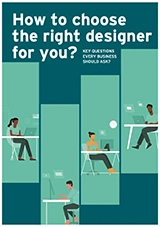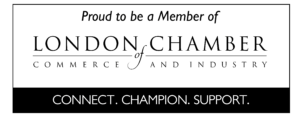We can’t work for you!
We can’t work with you, sorry.
At a recent networking event, the subject of ‘declining work’ cropped up, so I decided to share our thoughts with you here, tell you how we make our decisions and explain why we’ve ended some commercial relationships.
There are some industries we at S2 choose not to work with.
There are some clients we’ve had to end our relationship with – and others we would have loved to work for but felt doing so would present us with a conflict of interest.
Saying no to work is never easy (we are all trying to earn a living after all). But it can sometimes be the right thing to do.
During our 20+ years at S2 we have had to turn down work. There have been various reasons why we’ve felt it necessary to either decline a new account or resign from accounts we were working on – so let me explain our thinking.
When we started trading in 2001 we set some rules:
1. We don’t work with anyone in the porn industry
2. We don’t work with anyone in the gambling industry
3. We don’t work with the arms trade.
We have never been asked to work for the later – but we have been approached by clients in both the first two. We have been asked to do work to promote a porn site and we were approached a few years ago to help establish a new betting firm.
These were both easy no’s for us. But then there are the grey areas.
We’ve also been approached to do work for a vape manufacturer, and this was more of a conversation for us.
The product was supposedly aimed at getting people to quit smoking – transitioning to vaping and then using a staged step-down in tobacco content across their product range until eventually there was no tobacco at all. (BUT that could also be used as a staged stepping-up, with an entry level fruit flavoured vape and slowly increasing nicotine content).
As we dug deeper it became clear that product was disposable (not good for the environment and now targeted under UK law), and the graphics packaging brief appeared to be aimed at the youth market. Which implied more of an intro to smoking rather than an exit strategy! It didn’t take us long to realise this was not a client that we felt we could work for.
Figuring out if new work is a potential ‘good fit’ is not usually hard. Our process requires a ‘deep-dive’ at the start of working with anyone new and any mis-match of ethos generally becomes very evident, very quickly. However, resigning an account you already hold is a much more complex scenario.
Resigning an account is never something anyone does lightly. And the one instance we’ve felt we had to do it was especially difficult for us as we’d worked with the company for almost a decade. We successfully worked with three different holders of their Head of Comms role. We’d worked on their brand, exhibitions, website, and all communications materials. Needless to say the lifetime value of this client to us was – ‘quite large’.
So, how did we come to resign the account?
A new hire to the client’s staff was the key instigator. We swiftly realised that our values did not align with how this new employee operated. When we questioned a decision as it would quadruple the bottom line cost to the company, they openly stated that they were not interested in making the right decision for the overall organisation. Their decision shifted the allocation of funds off their departmental budget and onto the other internal departments budget ledgers. Obviously, the company would realise in time that this was costing them more in the long run but the individual seemed to have a career history of quick moves and maybe did not intend to still be around when those facts came to light.
S2 promote a ‘joined-up thinking approach’ to brand and communications, so this type of siloed thinking is at odds with everything we hold to – and stands against our objectives to see our clients thrive.
This new hire then asked us to be economical with the truth in presenting facts about the different options available in a strategy report we were preparing. Finally one of their direct team openly lied to us – a lie we caught them in (with third-party verification) which when raised with the new hire was simply dismissed.
For us the bridge was burnt. If we can’t work with mutual trust then we can’t collaborate properly. Which means any real working relationship is effectively over, as trust and collaboration are foundational to our process.
The client wasn’t happy, we weren’t happy and so we parted ways. I suspect they will claim they fired us. The final meeting was simply a formality. There was no way we were going to leave the room working along side the individual in question. Did we jump or were we pushed. Both are true.
I had the resignation letter in my pocket – which I left on the table as I left the room. But technically I did leave after they said they would not be placing any further work with us.
Thankfully, we’ve only ever felt the need to resign that one account.
But there is one final reason why we will not take on a client:
We won’t work with a direct competitor to a client we already have on our books.
This one can, on the face of it, be a bit more complex.
Some people work a niche, with several clients who operate in one sphere – and it’s a business model that works for them.
The problem is that we do not simply create designs for our clients. We work strategically with them – and when we are developing brand strategy for a client, or we are involved in research for them, then we are usually covered by an NDA.
Regardless of whether an NDA is in place or not, it is practically impossible to ignore the insights and ideas gleaned on one account (and on that client’s dollar) and not have that information cross-populate, inform and affect our thinking for any other, related business. We can’t ‘unknow’ what we know!
If working with two competitors information transference is inevitable, but we avoid any possibility of such compromise by having a policy of never placing ourselves in that situation in the first place.
This is an example of how our brand value of integrity impacts how we do business.
As an aside, if your brand values don’t affect how you do what you do – and who you choose to do it for – then I’d question their value at all.
When we are working to identify brand values with our clients we always ask them to expand the values they state as sentences and actions applicable to their business activities – identifying the action they take that embodies or expresses that value. How do your brand values actually live out and affect how you do what you do?
We regularly help company execs think through their own brand values, messaging and positioning and being able to illustrate how our own values impact our work at S2 can really help clarify things for them.
Additionally, imagine the scenario where we had two competitors on our books. Both of whom have asked us to consider how they engage new clients. We could very quickly find ourselves trying to secure the same advertising or promotional opportunities for each firm. Which do we show the best creative ideas to? Who gets the first pick of those ideas?
Say there was a big trade show coming up, both wanted to place an advert in the brochure and we were engaged to secure the actual advertising slots … we’d technically be bidding for both clients for the same prime ad spots … and we’d technically be bidding against ourselves!
Some firms are happy to operate like this, as they would say the account handlers work independently so there is not conflict. (But a higher ad spend means a higher fee return for them so why would they want to fix such an obviously broken system?)
Choosing your work partnerships is never simple. We view our clients as partners. We would hope they choose us because they like what we do AND how we do it. And that they also view us as equal partners in helping the achieve their goals
The fact that most of the people we work for become repeat customers and many remain with us for many years we interpret as a positive indicator that our methodology is working.
Indeed, our longest client relationship, with our most regular client, has been in place since S2 designs very first day in business. In fact, they were clients at our old firm and one of our directors had worked with them previously – hence them becoming a client in the first place. So that’s a 25 -year-plus working partnership.
Add in the fact that many individuals have taken us into new firms and new environments as they have moved on in their careers we think validates our collaborative approach.
There are not many design agencies who can claim that sort of client longevity and customer loyalty.







